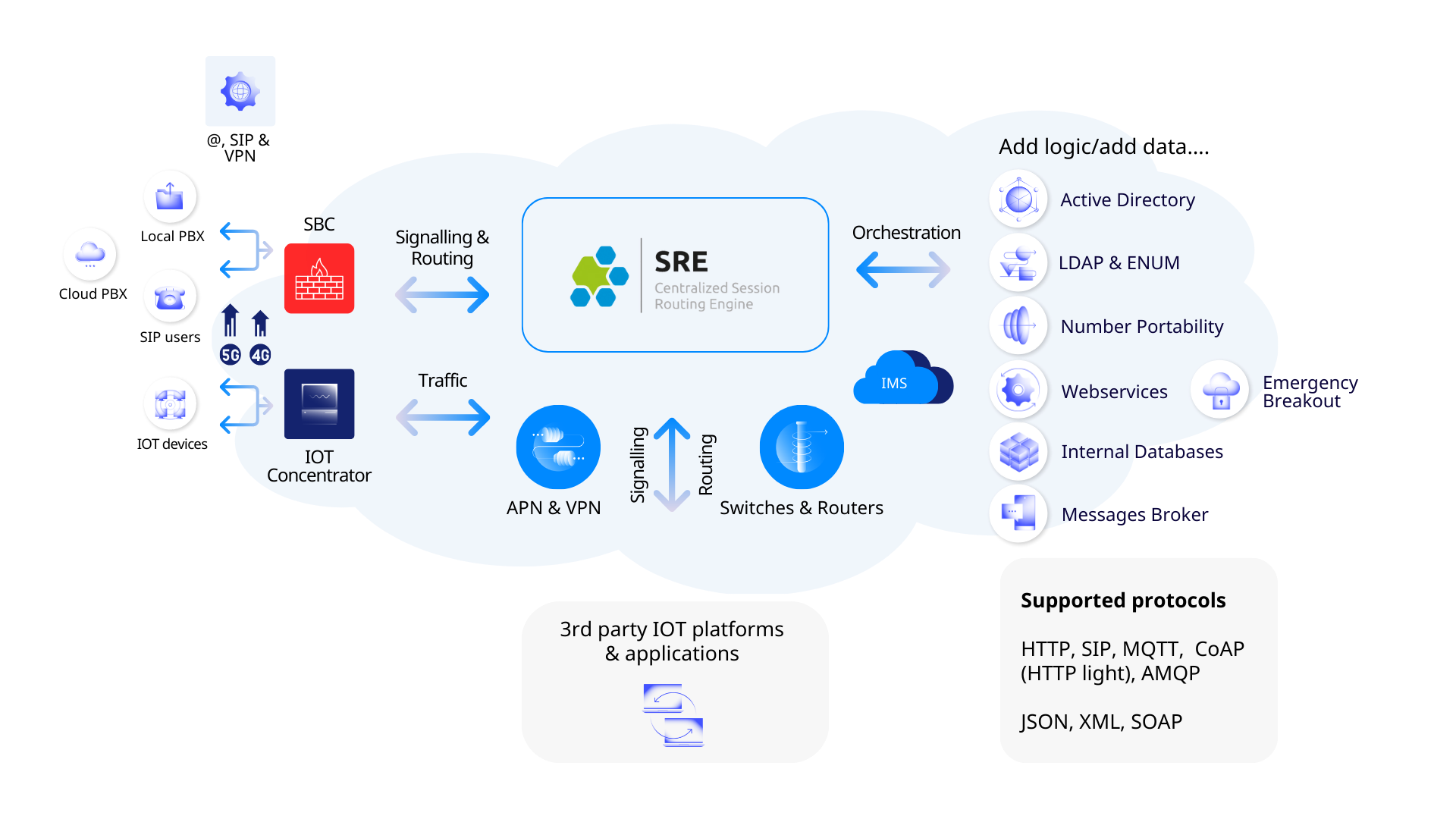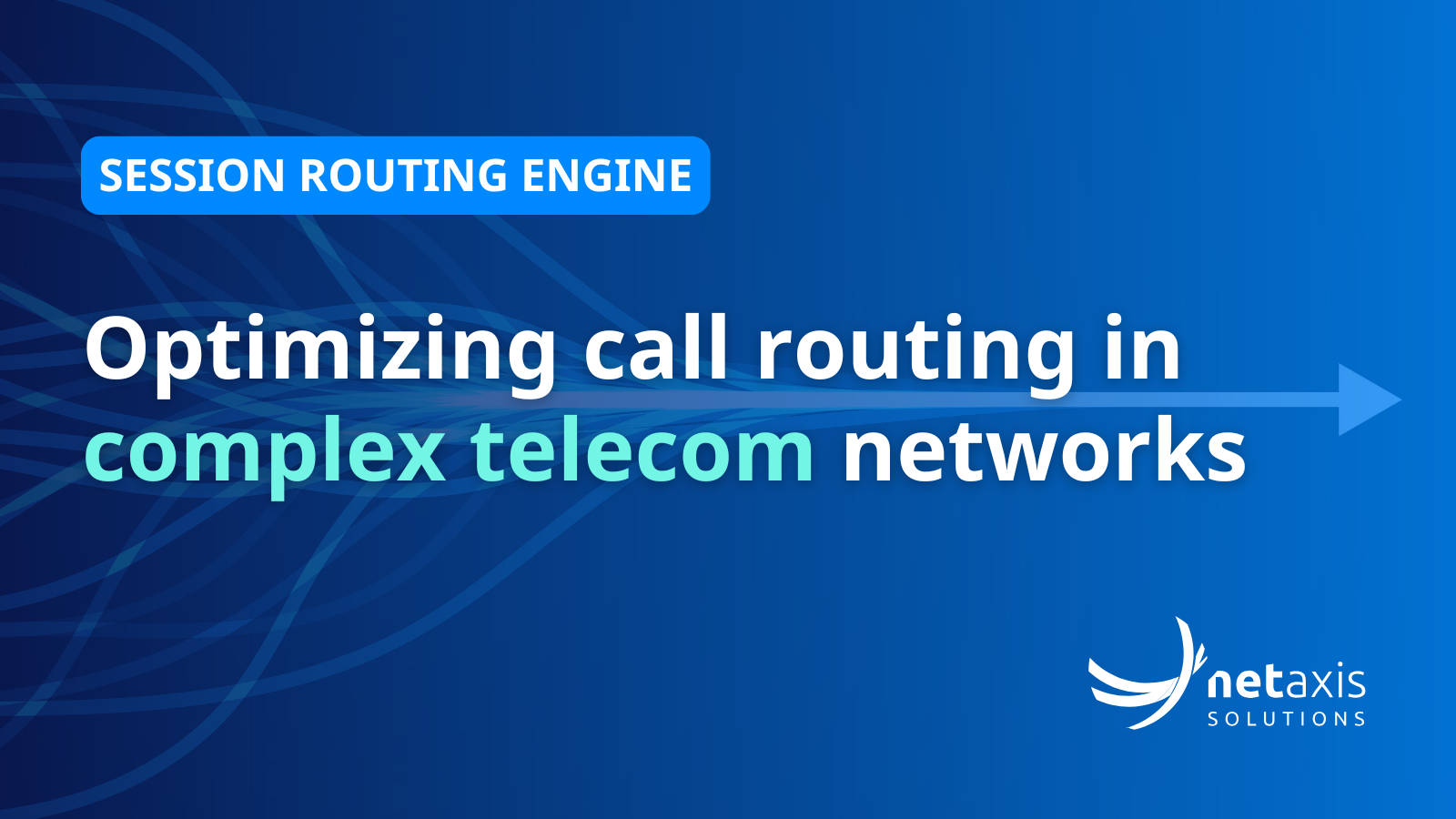The telecom industry is experiencing rapid growth and transformation, driven by the proliferation of new services, devices, and communication protocols. As networks become more complex, telecom operators face significant challenges in managing call routing efficiently. An advanced Session Routing Engine (SRE) like the Netaxis SRE platform is a game-changer, optimizing call flows, reducing latency, reducing human erros and improving overall network efficiency and avilaibility.
Table of Contents
The complexity of modern telecoms networks
Proliferation of services and protocols
Modern telecom networks are no longer just about voice calls. They now support a multitude of services, including: Voice over IP (VoIP), Internet of Things (IoT) communications, Unified communications. Each of these services may use different protocols such as SIP, H.323, RTP, and others. Managing call routing across these diverse protocols adds layers of complexity.
Increased network nodes and endpoints
With the expansion of services, the number of network nodes and endpoints has skyrocketed. According to a report by Cisco, the number of connected devices were expected to reach 29.3 billion by 2023. This massive scale increases the difficulty of maintaining efficient and accurate call routing.
Dynamic traffic patterns
User behavior has become less predictable, with peak usage times fluctuating due to remote work, global collaboration, and streaming services. Networks must adapt in real-time to changing traffic patterns to avoid congestion and ensure quality of service (QoS).
Regulatory and compliance requirements
Operators must comply with regulations regarding data privacy, call interception for law enforcement, and emergency call routing. These requirements add another layer of complexity to call routing management.
Advanced service routing capabilities are required
An advanced Session Routing Engine like Netaxis’ SRE offers a suite of features designed to address these complexities.
Dynamic routing
- Real-Time adaptation: Automatically adjusts call routes based on current network conditions, such as congestion or outages.
- Load balancing: Distributes call traffic evenly across network resources to prevent overloads.
- Policy-based routing: Implements routing decisions based on predefined policies, such as least-cost routing or priority handling for premium customers.
Policy management
- Centralized control: Allows operators to manage routing policies from a single interface.
- Customizable rules: Supports the creation of complex routing rules based on various criteria (time of day, destination, customer type).
- Regulatory compliance: Ensures routing policies adhere to legal requirements for data handling and call management.
Real-time Analytics
- Performance monitoring: Provides insights into network performance metrics like call success rates, latency, and jitter.
- Anomaly detection: Identifies unusual patterns that may indicate network issues or security threats.
- Reporting tools: Generates detailed reports for decision-making and regulatory compliance.
Scalability and flexibility
- Modular architecture: Can scale horizontally to handle increasing call volumes without significant redesign.
- Protocol support: Handles multiple communication protocols seamlessly, ensuring compatibility across services.

Case Studies: Streamlining networks with Netaxis SRE
Case Study 1: European telecom operator
A leading European telecom operator faced challenges with inefficient call routing, leading to increased latency and dropped calls. By implementing Netaxis’s SRE platform:
- Improved Call Success Rate by 25%: Through dynamic routing and load balancing.
- Reduced Latency by 30%: Optimized call paths minimized delays.
- Decreased Operational Errors by 40%: Centralized policy management reduced manual configuration mistakes.
Case Study 2: African VoIP service provider
An African VoIP provider struggled with integrating new services into their existing network:
- Seamless Integration: Netaxis SRE protocol support enabled quick addition of new services.
- Enhanced Analytics: Real-time monitoring helped identify and resolve issues before they affected customers.
- Regulatory Compliance: Built-in policy management ensured adherence to local regulations.
Statistics on network complexity and error reduction
- Operational complexity: According to a study by Analysys Mason, telecom networks have seen a 50% increase in operational complexity over the past five years.
- Risk of errors: Manual configuration errors account for up to 70% of network outages.
- Cost of Downtime: Gartner estimates that network downtime can cost operators up to $5,600 per minute.
Implementing an advanced SRE can significantly mitigate these risks by automating routing decisions and reducing reliance on manual configurations.
Netaxis Solution: Addressing call routing challenges effectively
Netaxis’ SRE platform is designed to tackle the complexities of modern telecom networks head-on.
Benefits
- Reduced latency and improved call Quality: By optimizing routes, the SRE minimizes delays and packet loss.
- Decreased operational errors: Automation reduces the likelihood of human error in network configurations.
- Cost savings: Efficient routing leads to reduced operational costs and better resource utilization.
- Enhanced customer satisfaction: Improved network performance translates to better customer experiences and retention.
Expertise and support
Netaxis offers comprehensive support and training, helping operators leverage the full capabilities of the SRE platform. This includes:
- Expert consultation: Assistance in configuring the SRE to meet specific network needs.
- Training programs: Educating staff on best practices and features of the platform.
- Ongoing support: Providing updates, maintenance, and troubleshooting assistance.
The complexity of modern telecom networks presents significant challenges in call routing management. However, with an advanced Session Routing Engine like the Netaxis SRE platform, operators can optimize call flows, reduce latency, and enhance overall network efficiency. By automating routing decisions and providing powerful analytics, the SRE platform not only simplifies network management but also reduces the risk of costly errors.
Embracing such advanced solutions is essential for telecom operators aiming to stay competitive and meet the ever-growing demands of today’s connected world.





